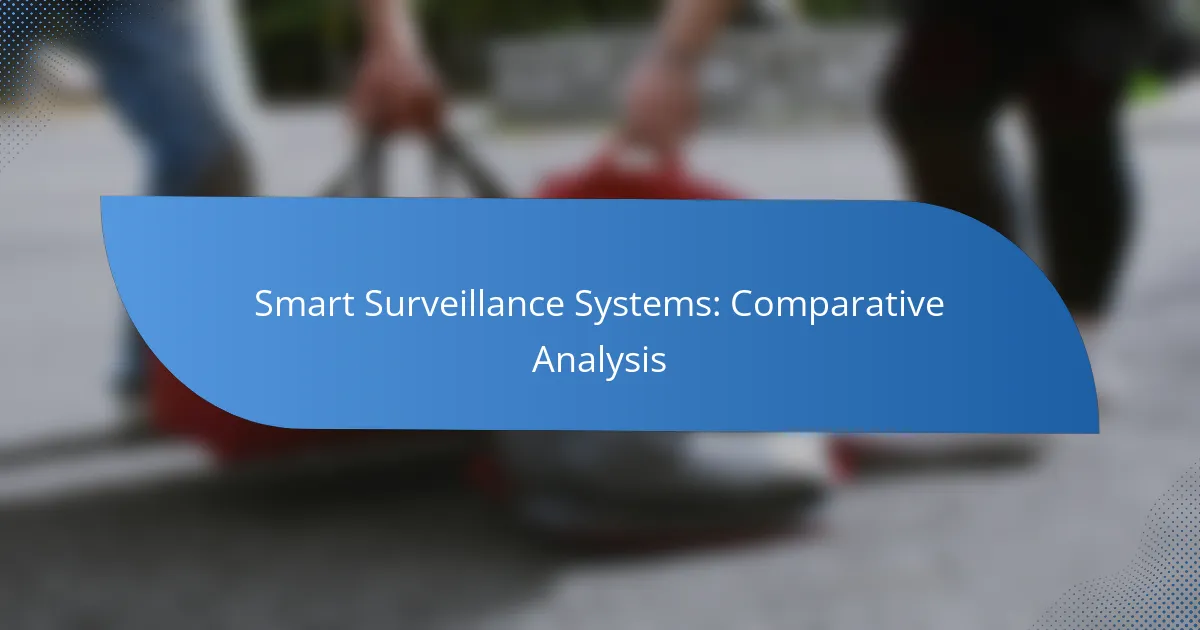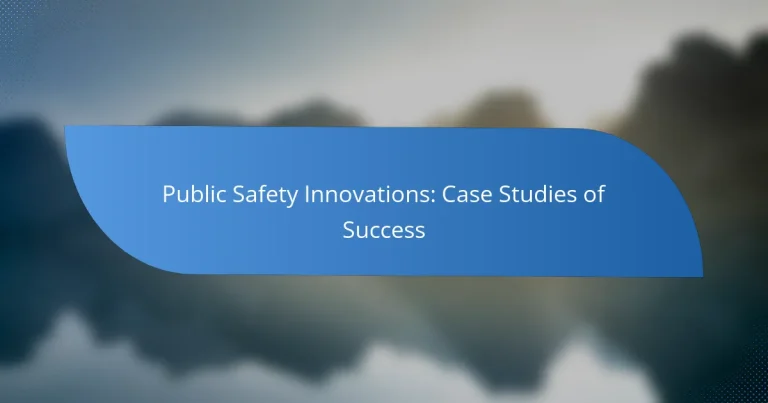Smart Surveillance Systems: Comparative Analysis
Smart surveillance systems are revolutionizing security by combining cutting-edge technology with intuitive features for effective monitoring of both residential and commercial spaces. These systems leverage high-definition video, motion detection, and seamless integration with smart home devices to provide real-time surveillance and enhanced safety. When choosing a system, it’s crucial to consider factors such as video resolution, night vision, and overall usability to ensure optimal protection.
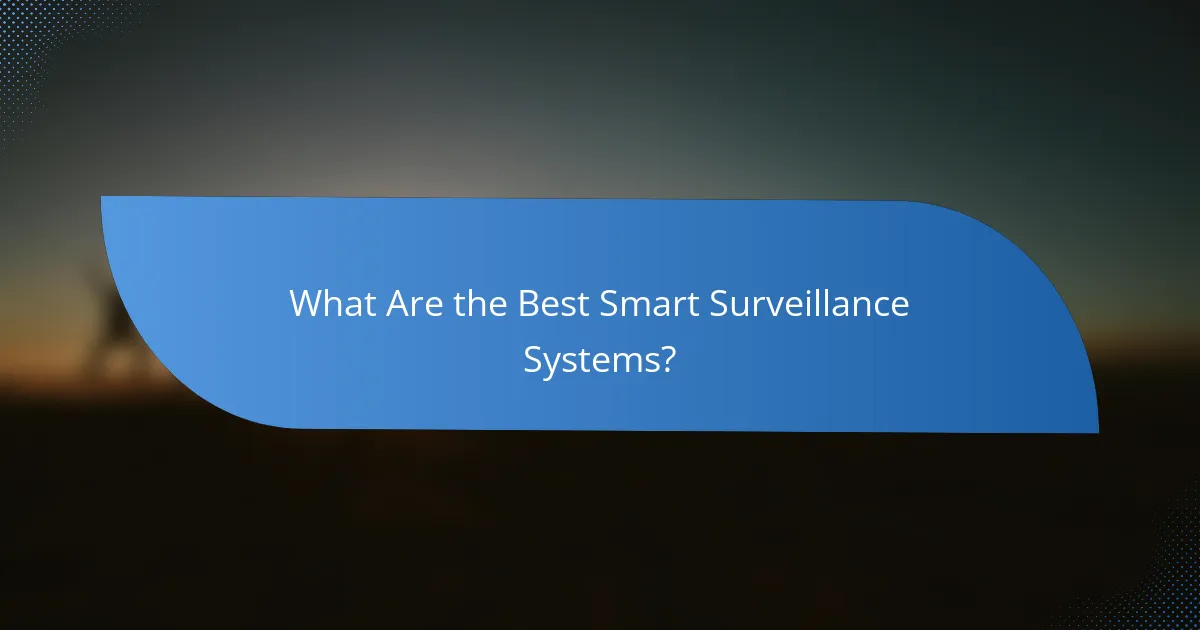
What Are the Best Smart Surveillance Systems?
The best smart surveillance systems combine advanced technology with user-friendly features, ensuring effective monitoring of homes and businesses. Key options include high-definition video quality, motion detection, and integration with smart home devices.
Arlo Ultra 2
The Arlo Ultra 2 is known for its 4K video resolution and superior night vision capabilities. It features a wide 180-degree field of view, allowing for comprehensive coverage of large areas.
Consider its two-way audio feature, which enables communication through the camera. The system also supports cloud storage options, making it easy to access recorded footage remotely.
Ring Spotlight Cam
Ring Spotlight Cam offers a blend of security and convenience with its built-in spotlight and siren. It provides 1080p HD video and features motion-activated notifications to keep you informed of activity around your property.
This camera integrates seamlessly with other Ring devices and can be powered by a rechargeable battery or hardwired. Its affordability and ease of installation make it a popular choice for homeowners.
Google Nest Cam
The Google Nest Cam is designed for indoor and outdoor use, featuring 1080p HD video and intelligent alerts. Its ability to distinguish between people, animals, and objects enhances its effectiveness in monitoring.
This system integrates well with Google Assistant, allowing for voice control and automation. Users appreciate its sleek design and the option for continuous video recording with a Nest Aware subscription.
Reolink Argus 3 Pro
The Reolink Argus 3 Pro stands out with its solar panel option, making it a sustainable choice for outdoor surveillance. It offers 2K video resolution and has a built-in spotlight for enhanced night visibility.
This camera supports both local and cloud storage, providing flexibility in how you manage footage. Its affordability and robust features make it appealing for budget-conscious consumers.
Wyze Cam v3
The Wyze Cam v3 is an economical option that does not compromise on quality, offering 1080p video and impressive night vision capabilities. Its compact design allows for easy placement in various locations.
With features like motion detection and free cloud storage for short clips, it is ideal for those seeking basic surveillance without high costs. The Wyze app provides a user-friendly interface for managing settings and viewing live feeds.
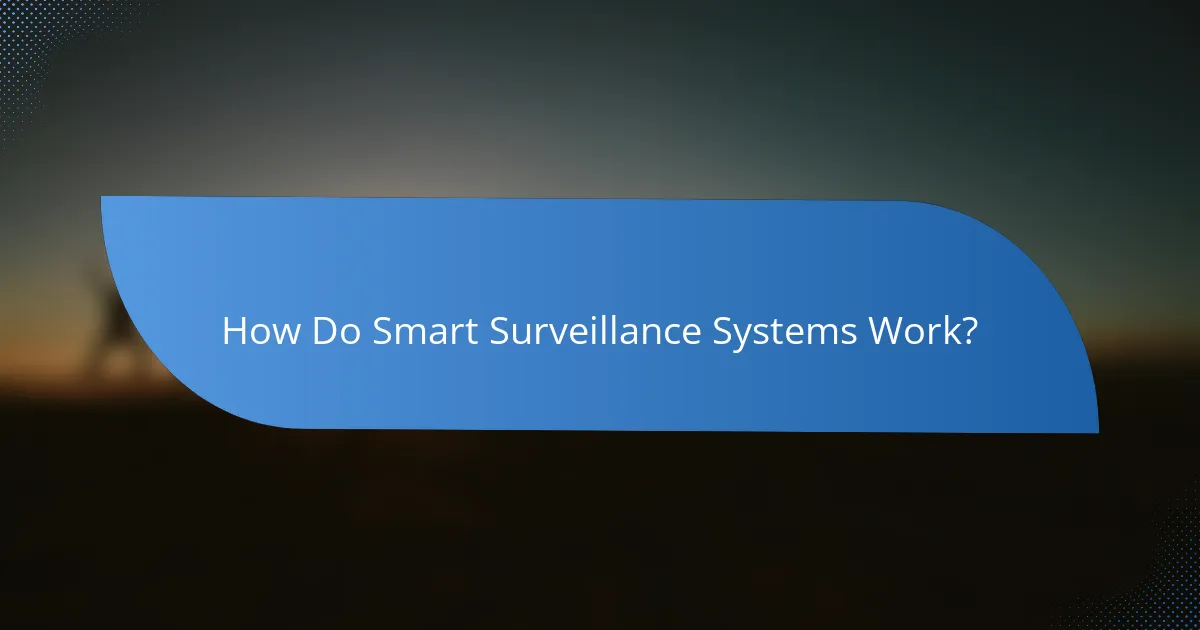
How Do Smart Surveillance Systems Work?
Smart surveillance systems utilize advanced technologies to monitor environments in real-time, providing enhanced security and efficiency. They integrate video streaming, artificial intelligence, and cloud storage to deliver comprehensive surveillance solutions.
Real-time video streaming
Real-time video streaming allows users to view live footage from surveillance cameras directly on their devices. This feature is essential for immediate response to incidents and can be accessed via smartphones, tablets, or computers.
When selecting a system, consider the video quality, frame rate, and bandwidth requirements. High-definition streaming typically requires a stable internet connection and may consume significant data, so ensure your network can handle the load.
AI-powered motion detection
AI-powered motion detection enhances traditional surveillance by using algorithms to identify unusual activities or specific objects. This technology reduces false alarms by distinguishing between human movement and environmental changes, such as animals or weather conditions.
When implementing motion detection, set clear parameters for alerts to avoid unnecessary notifications. Many systems allow customization of detection zones, which can help focus on critical areas while ignoring less relevant spaces.
Cloud storage options
Cloud storage options provide a flexible solution for storing surveillance footage, allowing for easy access and management from anywhere. Users can choose between subscription-based services or pay-as-you-go plans, depending on their storage needs and budget.
Consider the retention period for stored footage, as some providers offer options ranging from a few days to several months. Ensure that the chosen cloud service complies with local data protection regulations, such as GDPR in Europe, to safeguard privacy and security.
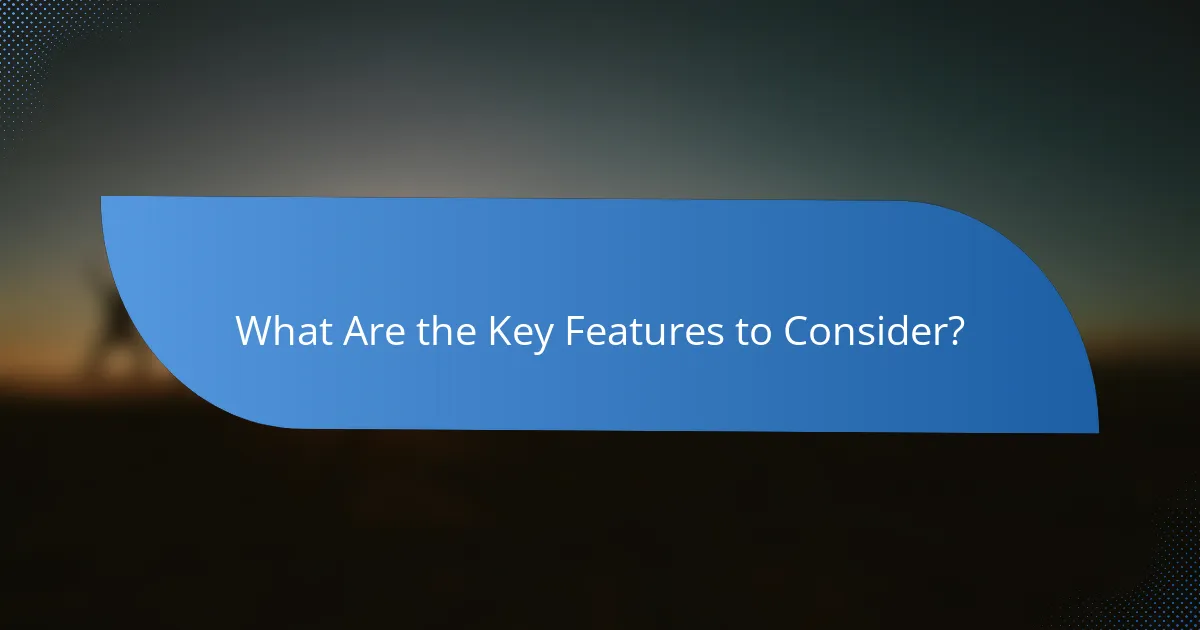
What Are the Key Features to Consider?
When selecting a smart surveillance system, it’s essential to focus on features that enhance security and usability. Key aspects include video resolution, night vision capabilities, and integration with smart home devices.
Video resolution
Video resolution is crucial for clarity and detail in surveillance footage. Higher resolutions, such as 1080p or 4K, provide sharper images, making it easier to identify faces and license plates. Consider your needs; for general monitoring, 1080p may suffice, while 4K is better for detailed analysis.
Keep in mind that higher resolution cameras typically require more storage space and bandwidth. Ensure your network can handle the increased data flow, especially if multiple cameras are in use.
Night vision capabilities
Night vision capabilities are vital for effective surveillance in low-light conditions. Look for systems that utilize infrared (IR) technology or color night vision to ensure clear images after dark. Many modern cameras can switch between modes automatically based on ambient light.
Evaluate the range of night vision; some cameras can see up to 30 meters or more in complete darkness. This feature is particularly important for outdoor installations where lighting may be minimal.
Integration with smart home devices
Integration with smart home devices enhances the functionality of your surveillance system. Look for cameras that can connect with platforms like Google Home or Amazon Alexa, allowing for voice control and automation. This integration can streamline your security setup and improve user experience.
Consider compatibility with other devices, such as smart locks or alarms, to create a cohesive security ecosystem. Ensure that the system you choose supports the protocols (like Z-Wave or Zigbee) used by your existing devices for seamless operation.
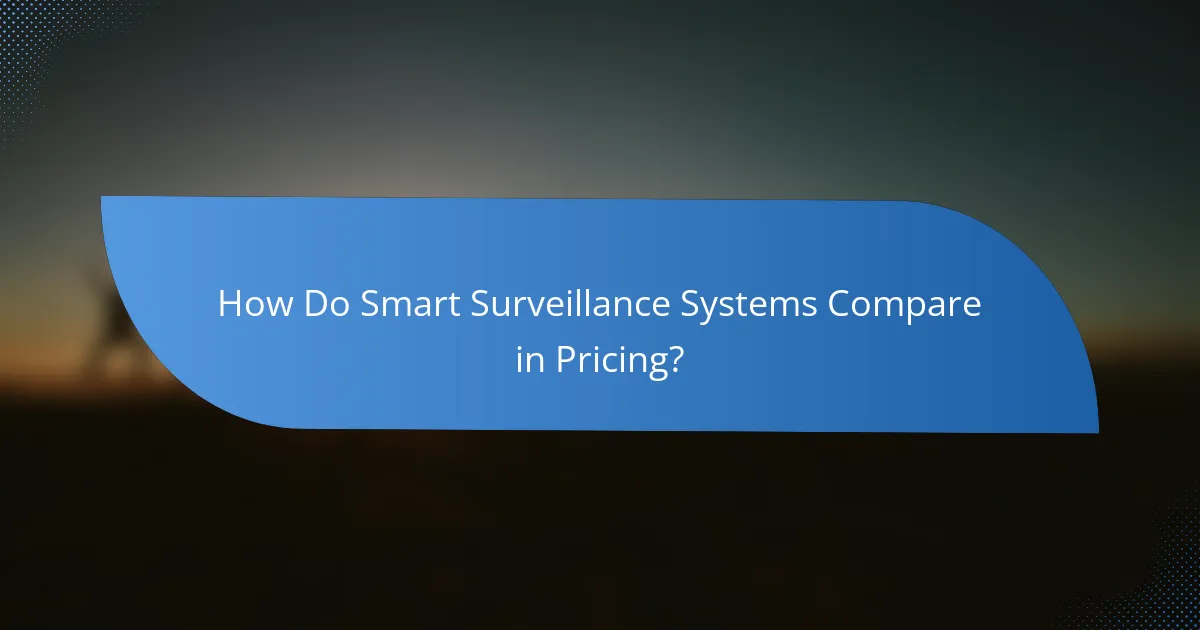
How Do Smart Surveillance Systems Compare in Pricing?
Smart surveillance systems vary significantly in pricing based on features, capabilities, and brand reputation. Budget options can start from a few hundred dollars, while high-end solutions may exceed several thousand, reflecting differences in technology and functionality.
Budget options
Budget smart surveillance systems typically range from $100 to $500. These systems often include basic features such as HD video recording, motion detection, and cloud storage options. They are ideal for small businesses or residential use where extensive monitoring is not required.
When selecting budget options, consider the quality of video resolution and the ease of installation. Some models may offer limited integration with smart home devices, which can be a drawback for users seeking a comprehensive security solution.
Mid-range systems
Mid-range smart surveillance systems generally fall between $500 and $1,500. These systems often provide enhanced features such as higher resolution cameras, advanced motion detection, and better storage solutions. They are suitable for medium-sized businesses or homes requiring more robust security measures.
Look for systems that offer mobile app access and integration with other smart devices. This can significantly enhance usability and provide real-time alerts, which are crucial for effective surveillance.
High-end solutions
High-end smart surveillance systems can cost anywhere from $1,500 to over $5,000. These solutions typically include advanced technologies like facial recognition, AI analytics, and high-resolution 4K video. They are designed for large enterprises or facilities that require comprehensive monitoring and security management.
When investing in high-end systems, consider ongoing costs such as subscription fees for cloud storage and maintenance. Ensure that the system complies with local regulations regarding surveillance and data privacy to avoid legal issues.
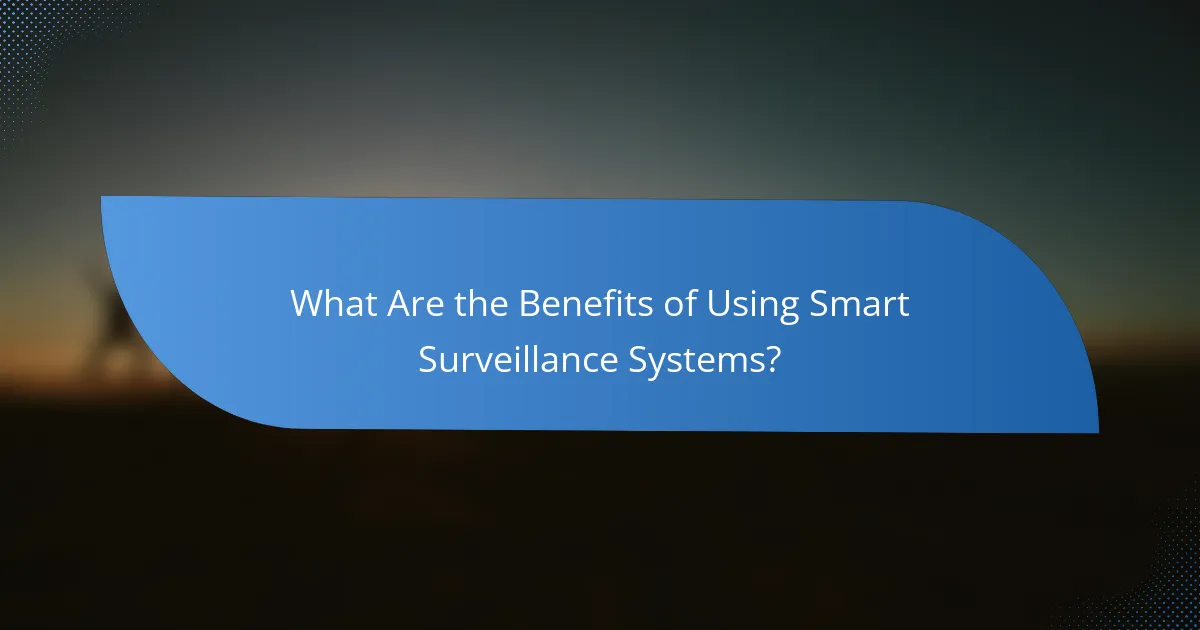
What Are the Benefits of Using Smart Surveillance Systems?
Smart surveillance systems offer significant advantages, including improved security, real-time monitoring capabilities, and potential cost savings. These systems leverage advanced technologies like AI and machine learning to enhance safety and operational efficiency.
Enhanced security
Smart surveillance systems enhance security by utilizing advanced analytics to detect unusual behavior and potential threats. These systems can automatically alert security personnel, allowing for quicker responses to incidents.
Features such as facial recognition and license plate recognition further bolster security, enabling organizations to identify individuals and vehicles of interest. This proactive approach can significantly reduce crime rates in monitored areas.
Remote monitoring
Remote monitoring is a key feature of smart surveillance systems, allowing users to access live feeds and recorded footage from anywhere with an internet connection. This flexibility is particularly beneficial for businesses with multiple locations or for homeowners who travel frequently.
Many systems offer mobile applications that provide notifications and alerts, ensuring users stay informed about their property’s security status in real-time. This capability can lead to faster intervention during security breaches.
Cost-effectiveness
Investing in smart surveillance systems can be cost-effective in the long run, as they often reduce the need for on-site security personnel. By automating monitoring tasks, businesses can allocate resources more efficiently.
Additionally, the integration of these systems can lower insurance premiums, as many insurers recognize the risk reduction associated with advanced surveillance. Organizations can expect to see a return on investment through enhanced safety and reduced losses over time.
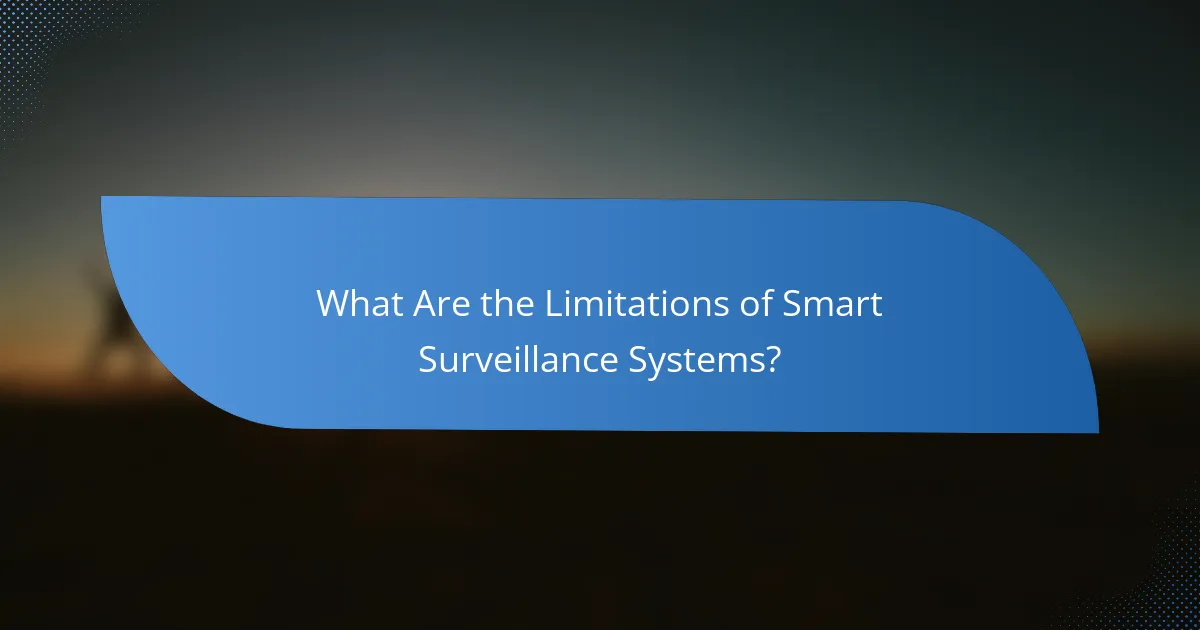
What Are the Limitations of Smart Surveillance Systems?
Smart surveillance systems have several limitations that can affect their effectiveness and reliability. These include issues related to privacy concerns, dependence on technology, and potential for false positives or negatives in monitoring.
Privacy Concerns
Smart surveillance systems often raise significant privacy issues. The extensive data collection can lead to unauthorized surveillance, potentially infringing on individual rights. For instance, in many jurisdictions, there are regulations that require transparency about data usage and storage, which can complicate implementation.
Organizations must navigate local laws, such as the General Data Protection Regulation (GDPR) in Europe, which mandates strict guidelines on personal data handling. Failing to comply can result in hefty fines and damage to reputation.
Dependence on Technology
These systems rely heavily on advanced technology, which can be a double-edged sword. While they offer enhanced monitoring capabilities, they are also vulnerable to technical failures, cyberattacks, or software bugs. A malfunctioning system can lead to gaps in security coverage.
Regular maintenance and updates are essential to mitigate these risks. Organizations should have contingency plans in place, such as manual monitoring or backup systems, to ensure continuous surveillance during outages.
False Positives and Negatives
Smart surveillance systems can produce false positives, where innocent actions are flagged as suspicious, or false negatives, where actual threats go undetected. This can lead to unnecessary alarm or, conversely, a false sense of security.
To minimize these issues, it is crucial to calibrate the system properly and continuously train the algorithms with diverse data sets. Regular reviews of the system’s performance can help identify patterns of inaccuracies and improve overall reliability.
